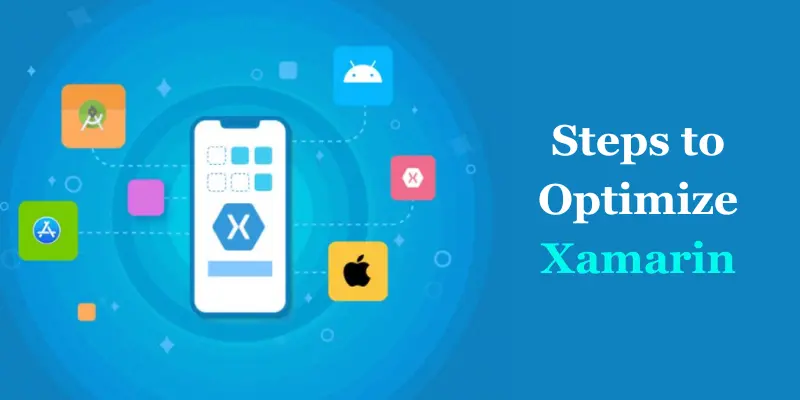
Xamarin is a robust cross-platform development framework that enables developers to create mobile applications using C# and .NET. However, optimizing Xamarin apps for performance ensures smooth user experience, reduced load times, and efficient memory usage. Poorly optimized apps can lead to sluggish performance, increased battery consumption, and negative user feedback. In this blog, we will explore essential steps to optimize Xamarin for mobile development and improve the overall efficiency of your applications. Enrolling in Xamarin Training in Chennai can provide hands-on experience and expert guidance to enhance your skills further.
Use the Right Project Structure: Xamarin.Forms vs. Xamarin.Native
Choosing the appropriate project structure is one of the first steps in optimizing Xamarin applications. Xamarin.Forms is best suited for applications that require a shared UI across platforms, enhancing code reusability and simplifying maintenance. On the other hand, Xamarin.Native (Xamarin.Android and Xamarin.iOS) is ideal for applications that need platform-specific UI customization and performance optimization. Choosing the right approach ensures better maintainability and a more efficient development process.
Optimize UI with Xamarin.Forms Best Practices
For developers using Xamarin.Forms, optimizing the UI is essential for performance improvement. Fast renderers help reduce overhead by optimizing the way Xamarin.Forms elements are drawn. Minimizing deeply nested layouts and using Grid and FlexLayout instead of StackLayout ensures better efficiency. Instead of using ListView, which can be performance-heavy, CollectionView offers better scrolling performance. Loading images asynchronously using libraries like FFImageLoading improves app responsiveness. Enrolling in a Xamarin Online Course can provide deeper insights into UI optimization techniques and best practices.
Reduce Application Size
Large app sizes can result in poor adoption and increased uninstallation rates. To optimize Xamarin apps for size, developers can enable linking to remove unused assemblies and reduce APK/IPA size (Link SDK Assemblies Only or Link All in project settings). Using Native AOT (Ahead of Time Compilation) precompiles code and reduces runtime overhead. Compressing resources by optimizing images and using formats like WebP, as well as removing unused dependencies, helps minimize application bloat.
Improve App Startup Time
Users expect quick app launch times, and optimizing startup time is crucial. Using the Startup Tracing feature in Android improves cold start performance without significantly increasing APK size. Reducing initialization logic by moving unnecessary code from MainActivity and AppDelegate to background tasks enhances speed. Optimizing dependency injection by resolving dependencies only when needed and enabling multidex using more than 64K methods can prevent slow startup times. Learning about mobile optimization strategies through PhoneGap Training in Chennai can further enhance your expertise in cross-platform development.
Implement Efficient Data Handling
Data management is critical for a responsive Xamarin application. Using asynchronous programming with async and await prevents UI blocking. Optimizing SQLite queries by minimizing database calls and indexing speeds up data retrieval. Implementing data caching reduces API calls and enhances loading speeds. Managing HTTP requests efficiently with HttpClientFactory prevents memory leaks and ensures smooth networking performance.
Optimize Memory Usage
Memory leaks can degrade app performance and cause crashes, so preventing memory issues is essential. Using weak references when working with event handlers helps prevent memory leaks. Explicitly calling.Dispose() of objects like Bitmaps and Streams ensures better resource management. Enabling garbage collection logging helps monitor GC behaviour and identify memory management issues. Avoiding retention of large objects in memory and storing them in a managed way prevents excessive memory consumption. Learning best practices through PhoneGap Online Training can enhance your ability to manage memory effectively in cross-platform applications.
Leverage Native Performance Enhancements
To further optimize performance, utilizing native features of Xamarin is beneficial. Implementing custom renderers for performance-critical UI elements enhances rendering efficiency. Using platform-specific animations like Lottie or native animation frameworks ensures smooth transitions. Enabling hardware acceleration for rendering-intensive applications improves visual performance. Utilizing dependency services to implement native platform features only when necessary ensures optimal efficiency. Understanding the Pros And Cons Of Xamarin can help developers make informed decisions when optimizing their applications.
Monitor and Debug Performance Issues
Continuous monitoring helps detect performance bottlenecks early, ensuring a seamless user experience. Xamarin Profiler helps identify memory leaks, CPU usage, and UI performance bottlenecks. Application Insights enables real-time tracking of performance metrics and crashes. Testing in Release mode provides an accurate measure of app performance compared to Debug mode. Analyzing platform-specific performance issues using Android Studio Profiler and Xcode Instruments ensures targeted optimizations.
Optimizing Xamarin applications requires a multi-faceted approach, covering everything from UI design and startup time to memory management and data handling. By following best practices like choosing the proper project structure, optimizing UI layouts, reducing app size, and leveraging native performance enhancements, developers can create highly efficient and responsive Xamarin applications. Regular performance monitoring and debugging ensure that apps run smoothly across platforms, providing a seamless experience for users. With these steps in place, Xamarin developers can confidently build fast, lightweight, and high-performing mobile applications while also considering Data Protection in Xamarin Apps to ensure security and compliance with privacy regulations.
Also Read: How Does Ionic Capacitor Differ From Other App Development Tools?